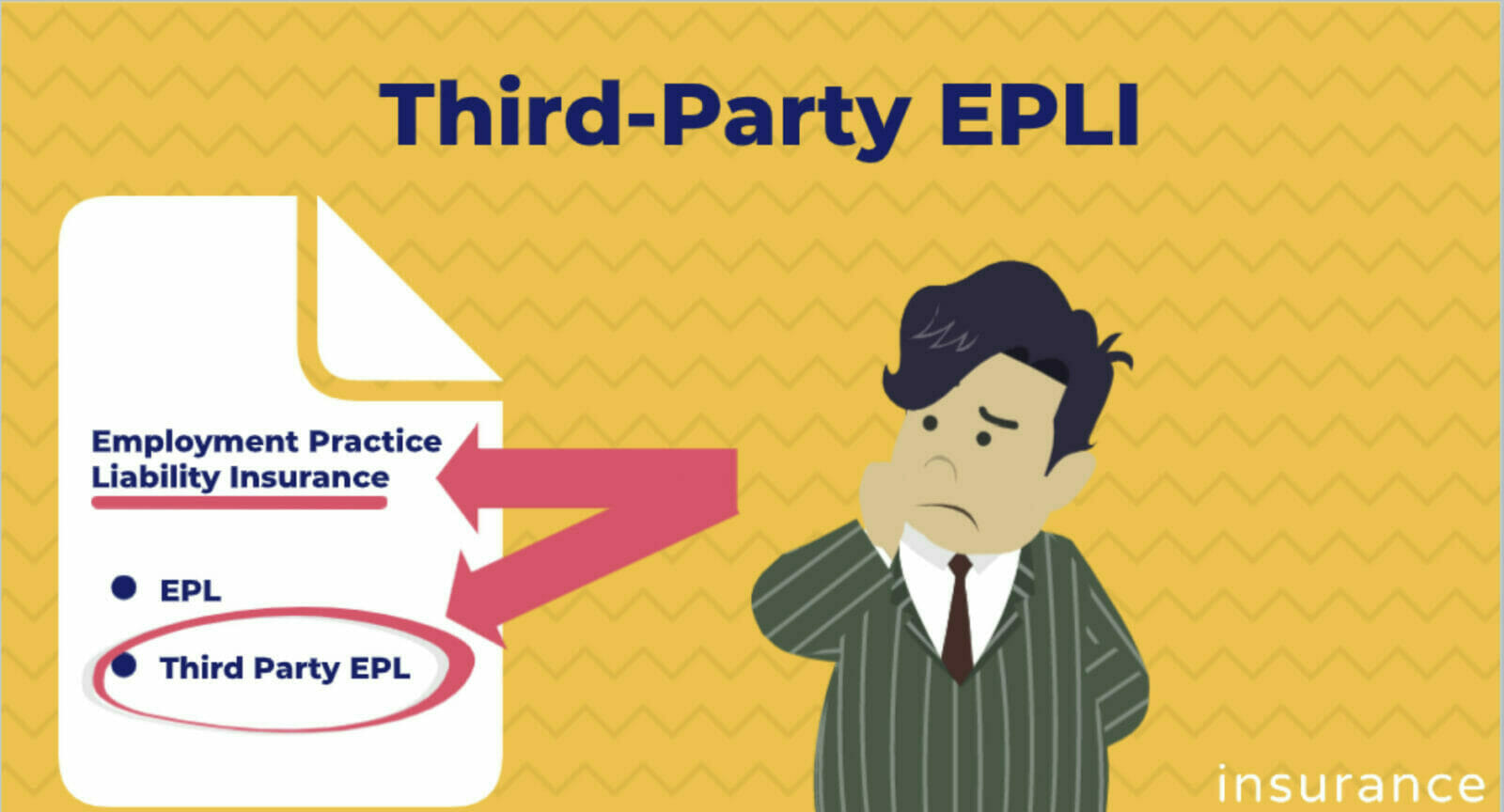Third-party Employment Practices Liability Insurance (EPLI) protects organizations against financial loss from discrimination or harassment claims brought against them by someone from outside the insured organization – by a third party. This coverage is commonly not a standalone coverage but rather, is an insuring agreement that may be added to an employment practices liability insurance policy. Third-party claims are a very real issue, especially for public-facing organizations such as retailers and companies in the hospitality industry. It’s important that organizations be aware of this coverage and how it works so that they are equipt to use it should the need arise.
Read this article to learn more about this coverage, where you can find it, and how it works.
What is Third-party Employment Practices Liability Insurance?
Third-party employment practices liability insurance provides organizations protection against discrimination or harassment claims brought against the insured organization or an employee of the organization by someone from outside the insured organization – by a third party, for example a client or a vendor.
Let’s break that down. When a third party makes allegations against an organization or its employees for discrimination or harassment, third-party EPLI responds to cover the financial loss to the organization (ie. defence costs, damages, etc.).
Third-party employment practices liability insurance, often referred to as third-party EPLI, is a separate insuring agreement within an Employment Practices Liability policy.
Employment practices liability insurance (EPLI) vs. third-party EPLI
So how do third-party EPLI and EPLI differ? Both insurances are triggered by claims of wrongful employment practices. The difference lies in who it is that makes the claim and their relationship with the claimee. Let’s take a closer look:
EPLI
In EPLI, the person who files the claim is an employee of the insured organization, filing against another employee of the organization, or the insured organization itself. So everything is within the insured organization – the first-party. This is first-party coverage.
An employment practices liability insurance (EPLI) policy protects organizations against financial harm resulting from claims brought against them for alleged employment practices wrongdoing. The complainants may be past, present, or future employees who have been injured by such wrongdoing. Examples of wrongful employment practices include discrimination, harassment, negligent hiring or retention, retaliation, wrongful dismissal, among others.
Third-party EPLI
In third-party EPLI, it is someone from OUTSIDE the insured organization – a third-party, typically a customer or vendor, who brings the claim against the insured organization or an employee of the organization. The difference between first- and third-party EPLI lies in the relationship between the person filing the claim and the insured organization, hence the name. It’s also important to note that third-party EPLI is generally limited to discrimination or harassment claims.
Third-party EPLI, is a separate insuring agreement within an Employment Practices Liability policy.
Third-party EPLI vs CGL
Commercial General Liability (CGL) insurance policies also protect organizations against liability claims from external parties. Is there an overlap between CGL and EPLI? The answer is, no.
Commercial General Liability (CGL) insurance policies protect organizations against liability claims for bodily injury and property damage. CGL policies specifically exclude both discrimination and harassment. Therefore, there is no coverage for third-party EPLI under a CGL insurance policy. Insurance buyers need to purchase the cover separately.
What does the insuring agreement look like?
The wording for third-party EPLI may be a little confusing at first glance. This is because employment practices liability is a liability insurance, and the wording must make a distinction between coverage for claims brought by employees and claims brought by non-employees.

For example, a policy may state something like this:
“The Insurer shall pay on behalf of the Insureds all Loss they are legally obligated to pay on account of any Third Party Claim for a Third Party Wrongful Act.”
In the above wording, “Third Party” is being used to reference the third party that brings forward the claim, and the type of wrongful acts that would be covered under third-party EPLI.
Third-party wrongful act may be defined as:
Third Party Violation any actual or alleged harassment or unlawful discrimination, or the violation of the civil rights of a person relating to such harassment or discrimination, when such acts are alleged to be committed against anyone other than an Insured Person or applicant for employment with the Company, including, but not limited to, students, patients, members, customers, vendors and suppliers.
Where do I find third-party EPLI?
Third-party employment practices liability insurance is a separate insuring agreement within an employment practices liability insurance policy. It must be added to a standard EPLI policy in order for the insured to obtain coverage. You may have to look for the coverage and, you may need to ask for it. Do not assume the insurance company will automatically add third-party EPLI coverage just because you have the exposure.
For publicly listed companies with a standalone EPLI policy, there two ways to add third-party EPLI:
- Separate insuring agreement: some insurance companies include third-party EPLI coverage under Insuring Agreement B in an EPLI policy. When a separate third-party EPLI insuring agreement forms part of an EPLI policy, it is typically subject to a smaller separate limit (ie. separate from the limit provided for standard EPL claims).
- Endorsement: other insurers add third-party EPLI as an endorsement, upon request, and subject to an additional premium. With this approach, the sub-limit is typically part of the limit included in Insuring Agreement A (ie. the traditional EPL coverage).
For private companies and not-for-profit organizations that hold directors and officers (D&O) liability insurance, the situation is different. Employment practices liability coverage is commonly included in private company and not-for-profit D&O liability insurance policies. Therefore, third-party EPLI coverage may be added to the Employment Practices Liability coverage section in the Directors & Officers Liability Insurance policy.
Third-party EPLI claims examples
Here are some examples would be third-party EPLI claims:
- A gas attendant makes inappropriate advances to a customer while filling their car.
- A restaurant seats customers based on their visible ethnicity, giving priority to one ethnicity over other ethnicities.
- A retail clerk refuses to serve non-native English-speaking customers because he finds their accents difficult to understand.
An organization’s exposure to third-party EPL claims increases with the number of client interactions. Public-facing businesses, for example, a restaurant, a shopping mall, or a hotel chain, would have significantly higher exposure to third-party EPLI claims than would a technology manufacturer. While not always, frequently these claims give rise to class action suits and that can be very costly.
Key Takeaways:
- Third-party EPLI covers claims against the insured brought by an external party, a third party.
- Third-party EPLI coverage is not part of a standard EPLI policy.
- Only policies with a third-party coverage in place can cover third-party EPLI claims.
- Companies that operate consumer-facing businesses, such as restaurants, retailers, and entertainment venues, should ensure they request the inclusion of this coverage when purchasing their EPLI policy.
Read more about: Employment Practices Liability Insurance




